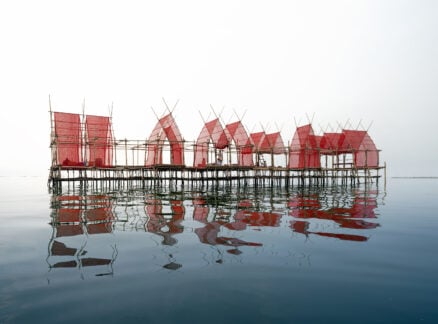July 1, 2011
A Touch of Panton
The Danish designer’s groovy system furniture is making a surprising comeback.
DESIGNER
Verner Panton
MANUFACTURER
Verpan
www.verpan.dk
DISTRIBUTOR
Design Within Reach
www.dwr.com
Despite having been mentored by both Arne Jacobsen and Pøul Henningsen, the Danish-born designer Verner Panton is rarely mentioned in the same breath as his distinguished compatriots. That’s no surprise, since even in his heyday, Panton was considered the oddball, the enfant terrible who broke from Scandinavian convention. Instead of producing soft, organic forms in teakwood, he opted for groovy plastic chairs set in interiors awash in brash colors. But it is a surprise that at a time when super-minimalism is all the rage, Panton, whose work is anything but subtle, is experiencing something of a resurgence: this August, Design Within Reach will become the exclusive U.S. distributor of a range of his pieces dating from the 1960s and ’70s.
“Adding a touch of Panton between any four walls instantly transforms the room,” says Peter Frandsen, whose company, Verpan, is faithfully reproducing several pieces from Panton’s archives, now overseen by his widow, Marianne. Indeed, a bit of Panton playfulness may be just what consumers crave as they come off a period of economic and aesthetic austerity. “Since we started making the first Verner Panton lamps seven years ago,” Frandsen says, “I have expressed my wish to someday expand the collection to other Panton things, like furniture and rugs.” He got his wish: the new pieces include the System 1-2-3 lounge and dining chairs; the round Panton Table (never produced, though originally meant to accompany Panton’s iconic curvy plastic chair, still produced by Vitra); the Partyset (a five-piece seating and table system); the Barboy (a cylindrical bar caddy); and the circular Panton Rug Grande (featuring an op-art textile pattern from 1975).
The collection speaks to Panton’s penchant for system furniture, not to mention his fascination with novel materials and production methods. The 1-2-3 chairs, developed in 1973 with Fritz Hansen, were meant to satisfy every possible sitting preference. Made with an innovative bent-steel frame, the S-shaped seats come in four different heights, with a low or high back, and sometimes with six types of feet. They can also be linked with connecting clips to form a sofa. Likewise, the 1965 Partyset and the 1963 Barboy were meant for flexible entertaining. The Partyset’s five cylinders—one table and four leather-padded stools—stack into one tower, which can be rolled about on casters. And the Barboy (similar to Joe Colombo’s Boby Trolley) has four sections, two of which swivel out to reveal storage and provide places to set down drinks.
All of the pieces symbolize Panton’s break from stiff formality and his move toward a more fluid, fun way of living. As he once said, “I can’t bear to enter a room and see the sofa and coffee table and two armchairs, immediately knowing that we are going to be stuck there for an entire evening.” But it’s still wise to remember that a touch of Panton goes a long way.





